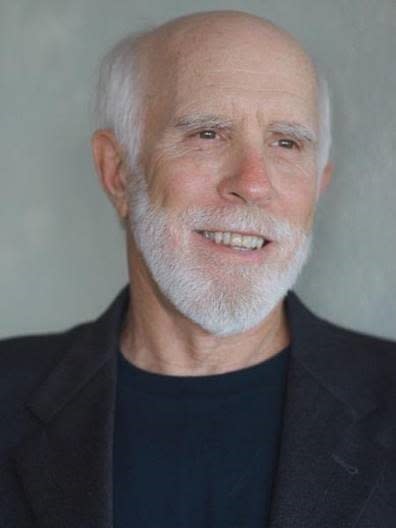SEVERUS: The Black Caesar | Miniseries
Pilot + 6 x 50-minute drama for On Demand TV
Septimius Severus died in York in 211 AD and was arguably the first black man to set foot on British soil, yet he came not as a slave, but as Emperor. Behind this still little-known fact there is the incredible tale of someone who grew from rebellious youth to the most powerful man in the ancient world.
Severus, the Black Caesar, came from humble beginnings in occupied North Africa, born in the Mediterranean city of Lepcis Magna. He would end his days fighting in Northern Scotland, having expanded the Roman Empire further than any of his illustrious predecessors, from Julius Caesar to his mentor, Marcus Aurelius.
As a boy, Severus hated the Romans. He was involved with local freedom fighters, taking part in daring raids of sabotage against the Empire. But frustrated by this small-time rebellion and its petty violence, the keen-witted Severus embarked on a journey to Rome, taking him to the heart of the power that he despised.
Once there, however, the picture changes. Little by little, his exposure to Rome begins to change him and soon he finds himself in an ironic position: sent as a soldier from Rome to fight his fellow Africans, as they cross the Mediterranean and into Spain. His accidental military career gains him a reputation, and powerful friends.
When the much-loved Emperor Marcus Aurelius dies and his depraved son Commodus becomes the new ruler, Rome becomes an increasingly dangerous place. After Commodus is assassinated, the veteran Roman general Pertinax is hailed as Emperor. However, Pertinax manages to hold on to his throne and his head for a mere sixty-eight days, and his murder plunges Rome into bloody civil war.
Featured Cast
Marlowe Simms as Septimius Severus

The Black Caesar. He grows from a boy who is prideful and naive to a man who understands the world. He is a man who tries to remain loyal to his principles, but often creates situations where he must make impossible choices. He is stubborn and often struggles to find his place in the empire, but is also kind and reasonable. He is outspoken in what he believes, sometimes to his own detriment.
Kourtney Crystal as Julia Domna

A priestess who entraps Severus. She gives birth to both of his children and claims to love him, but works completely under her own auspices. She is alluring and mysterious, but also strong-willed and powerful.
Supporting Cast
Marc Goodman as Marcus Aurelius
An emperor of reason who becomes a mentor to Severus. He believes deeply that the wise should rule the foolish and imparts that to Severus before his death.
Kaci Frick as Lucilla
The beautiful and cunning daughter of Marcus Aurelius. She is devoted to her younger brother Commodus and every bit as ambitious.
Cornell D. Hills as Pertinax

Pertinax succeeded Commodus to become the first ruler during the tumultuous ‘Year of the Five Emperors’. He was a brother in arms and a great advisor to Severus.
Ifeyinwa as Paccia

Despite being betrothed to Geta, Paccia’s heart has always belonged to his younger brother, Severus. When a protest against Roman occupation turns violent the star-crossed lovers flee the city and secretly marry.
Keith Crosby as Geta

By all account Geta, the elder brother of Severus should have been the one destined for greatness. However, he is unlucky in love and always envious of his brother’s natural ability to charm animals and people alike.
Series Outline
Episode 1 – The Septimius family in the African city of Leptis Magna prepares to receive the arrival of a Roman legate. Young Severus wants nothing to do with the visiting Romans, while his brother, Geta, aspires to be invited into the empire. Severus conspires with some shady friends in order to humiliate the visiting Romans. He is betrayed and the entire palace, friends and Romans, must fight for their lives. Severus watches men die because of his choices. He is ultimately sent to Rome with his brother, but not before sleeping with his brother’s fiancée, Paccia.
Episode 2 – Severus leaves immediately for Rome after facing Geta’s anger and is thrust into the overwhelmingly large and foreign empire. He catches the attention of the emperor, Marcus Aurelius, after criticizing Rome. To Severus’s surprise, Aurelius is a fair ruler with big ideas who puts Severus to work in the coliseum, much to the discontent of Commodus. Severus and Paccia are married in a quiet ceremony without either of their families’ permission. The unfaithful wife of Aurelius attempts to poison him while Severus returns home to discover his father has died.
Episode 3 –Severus returns to an angry homeland that has discovered he had a hand in the attack of their palace. He leaves Paccia behind in a brothel while he goes on a mission from the emperor to negotiate with the Moors. After a futile attempt to build common ground, Severus leads a Roman legion into a multi-day battle. Meanwhile, in Rome, Aurelius succumbs to the poison and Commodus takes over as emperor. Geta writes a letter of forgiveness to Severus and Commodus renames Rome after himself. A priestess, Julia, approaches Severus with a vision: the death of those around him. Severus is arrested by Commodus.
Episode 4 – Paccia is still in hiding in Leptis Magna, forced into desperate measures to survive. She is lured to go to Geta because of his letter to Severus. Geta captures and kills her in a murder-suicide. Commodus tries Severus for treason, but ultimately is convinced to put Severus’ military strengths to use again. Julia appears and tells Severus she is pregnant with his child. Two senators, Pertinax and Pompaenius, arrange to have Commodus killed. Severus escapes with Julia and his son to Germania. Pertinax becomes the new emperor, but is quickly killed in a military coup. Severus prepares to march on Rome and take it back.
Episode 5 – Severus gathers his men to march on Rome amidst the birth of his second son. He calls on men from across the Empire and leads them through a treacherous path in the freezing cold of Germania. Meanwhile, the rich men who have taken over Rome in the vacuum of a true leader plot to keep their position. Severus leads an epic battle against the Praetorian Guard to become the Emperor. His position is secure, but the same men with deep pockets plot against him.
Episode 6 – Severus has had a successful start to his reign, freeing Rome of its debts and getting the empire back on track after the havoc wreaked by Commodus. However, he creates a stir when he decrees that Rome’s provinces will rule themselves. Severus’ son, Geta, has grown to be a good young man like his father, while his brother, Caracalla lurks in the shadows. Angry senators plot against Severus. He rides into battle to defend Rome, making Caracalla his co- emperor in his absence. Caracalla begins to inflict barbaric punishments, much as Commodus did. Severus returns home to see his mother.
Episode 7 – Severus visits the haunts of his youth in Leptis Magna. Geta is scrambling to patch up the damage caused to the empire by Caracalla’s careless rule. Severus returns to attempt some damage control, but he is older and another trip to Britain with the army gravely jeopardises his health. He struggles to impart his wisdom on his sons as Marcus Aurelius did to him. He experiences the ghosts of his past one last time before dying. As he dies, Geta insists that he and Caracalla must rule together, as their father wished. Caracalla agrees, but as the funeral pyre burns, he begins to plot against his brother…



